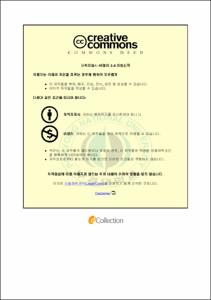퇴적물의 생화학적 조성을 이용한 연안역의 영양상태 평가
- Abstract
- In order to classify the trophic state and environmental quality of marine coastal system, instead of the conventional indicators based on inorganic nutrient availability and argal biomass and productivity in the water column, this study used a biochemical approach based on the analysis of the quality and quantity of sedimentary organic matter.
A study, including 25 coastal bay, belong to 131 stations, was carried out along the southern sea of Korea in February 2007. The investigated area covered a wide range of anthropogenic impact areas affected by industrial wastes, and mariculure areas and marine protect areas.
Most of the sedimentary variables investigated in the study (i.e., TOC, TON, PRO, CHO, BPC) displayed decreasing value moving from the eastern to the western coast. This difference indicates that the area, being characterized by different on the OM loads, displayed different trophic conditions. This was also evident in terms of biochemical composition of organic matter.
On the basis of results, it is possible to conclude that the use of biochemical composition of the sediment organic matter can be considered an useful and sensitive tool for the classification of the trophic state of coastal marine systems. In particular, sediment proteins and carbohydrate concentration appeared to be a good descriptor of the trophic state of the benthic systems at different spatial scales.
MDS analysis allows identifying areas characterized by trophic condition and defining relative threshold levels. A classification of the trophic state of coastal systems based on protein and carbohydrate concentration is proposed in this study.
The Assessment of the trophic state of marine systems is a fundamental task in applied ecological research, but the scientific community currently has only a limited set of tools to help guide ecosystem management in the field of eutrophication. Therefore, the assessment in this study is expected to use alternative way to evaluate trophic state in coastal areas.
- Issued Date
- 2010
- Awarded Date
- 2010. 2
- Type
- Dissertation
- Publisher
- 부경대학교
- Department
- 대학원 생태공학과
- Advisor
- 이석모
- Table Of Contents
- Ⅰ. 서론 1
Ⅱ. 이론적 배경 4
1. 기존의 영양상태 평가 4
1.1. 단일 항목에 의한 평가 4
1.2. 복수 항목에 의한 평가 5
1.3. 지수에 의한 평가 6
2. 새로운 지표(indicator)의 필요성 9
3. 퇴적물 내 생화학적 조성 12
4. 퇴적물 내 생화학정 조성을 이용한 영양상태 기준 설정 사례 14
Ⅲ. 재료 및 방법 16
1. 연구지역 16
2. 현장조사 및 시료분석 19
2.1. 현장조사 19
2.2. 시료분석 19
3. 자료분석 21
Ⅳ. 결과 및 고찰 22
1. 해역별 퇴적물 특성 22
1.1. 입도 조성 22
1.2. 퇴적물 내 유기물 분포 24
1.3. 퇴적물 내 생화학적 조성 29
1.4. 퇴적물의 유기물 기원 35
2. 남해안 영양상태 37
3. 퇴적물 내 생화학적 조성을 이용한 영양상태 기준 설정 41
4. 수질을 이용한 영양상태와 비교 43
Ⅴ. 결론 45
참고문헌 47
감사의 글 59
- Degree
- Master
- Files in This Item:
-
-
Download
 퇴적물의 생화학적 조성을 이용한 연안역의 영양상태 평가.pdf
기타 데이터 / 1.62 MB / Adobe PDF
퇴적물의 생화학적 조성을 이용한 연안역의 영양상태 평가.pdf
기타 데이터 / 1.62 MB / Adobe PDF
-
Items in Repository are protected by copyright, with all rights reserved, unless otherwise indicated.